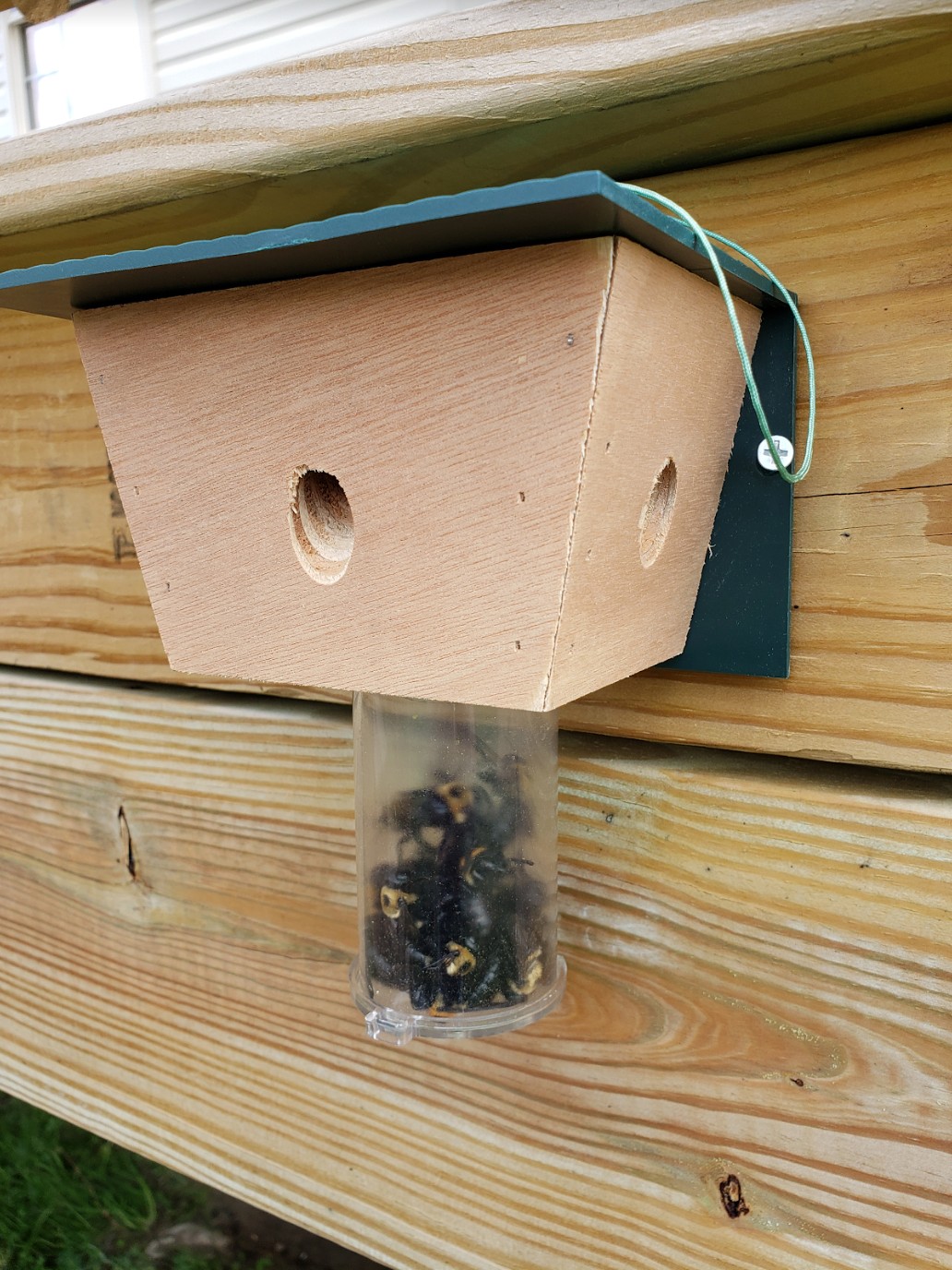As we transition from winter to spring and the temperatures begin to rise, it's important to be aware of the potential pest issues that may arise this season. The onset of warmer temperatures and increased humidity is like a green light to the unwanted critters near your home. Why? Pests are known to become more active and reproduce more rapidly during the spring and summer.
To help you prepare for the upcoming season, we've created a helpful checklist that covers everything you need to know about pest control during spring cleaning. Whether you're a homeowner or a renter, our guide will provide you with practical tips to ensure your home remains pest free and your family stays healthy

When Do Bugs Come Out in Spring?
One of the first questions that may come to mind is, "When do bugs come out in spring?" Bugs that come out in spring do so for various reasons, including to assess mating prospects and forage for food. Knowing when these bugs come out, however, is crucial for effective pest control.
Today, we'll discuss when you can expect these insects in the spring, as well as the importance of understanding their behavioral patterns. We'll also introduce some common spring bugs that homeowners may encounter in the upcoming months. From termites to mosquitoes, and everything in between, we'll describe their behavior, typical habitats and potential threats to your home. Our goal is to be able to help you identify these springtime insects and take appropriate measures to prevent future infestations.
So, if you're ready to tackle your spring cleaning with pest control in mind, read on for all of our favorite tips and tricks.
Common Spring Bugs and Insects
As the weather warms up and flowers start to bloom, we can expect to see an influx of springtime bugs and insects. While some of these critters may be harmless, others can pose a considerable threat to your home and health.
Here are some of the most common pests that homeowners may encounter during the spring season:
- Termites: Termites are one of the most destructive insects that may decide to take up residence in your home, causing an estimated $5 billion per year in damage in the United States.1 They typically feed on wood, which can weaken the structural integrity of your property. During the spring season, termites swarm in search of a new nesting site, where they build colonies and tunnel through wood. If you notice discarded wings or mud tubes around your home, you might just have a termite infestation.
- Mosquitoes: Mosquitoes are known for their itchy bites and ability to transmit diseases like West Nile virus and Zika virus. They thrive in warm and humid conditions, making the spring season a prime time for their breeding cycles. To prevent mosquitoes from breeding on your property, it’s important to remove any standing water sources, especially those that collect rainwater, such as birdbaths, buckets or empty pots and planters.2
- Ants: Ants are a common sight during the spring season as they emerge from their nests to forage for food. While most ants are harmless, some species – like carpenter ants – have the ability to cause damage to wooden structures. To prevent ant infestations, keep your kitchen clean and be sure to store your food in airtight containers. This might not prevent every eager scout from probing your pantry, but it will help to prevent a full-scale invasion.
- Bees and Wasps: Bees and wasps are beneficial insects that play an important role in pollination. However, depending on the species type, their stings can be painful and even life-threatening for those with allergies. If you notice a wasp or hornet nest on your property, it's best to contact a professional pest control company to safely remove it. But if you're struggling with carpenter bees, you can go the DIY route. Best Bee Brothers has several solutions for you to choose from, including the Carpenter Bee Trap 2.0 with Best Vault, Pine Wood Carpenter Bee Box Trap and our Citrus Carpenter Bee Repellent Spray.
- Spiders: While most spiders are harmless, some parts of the country are home to species like the black widow and brown recluse, which pack a powerful punch and can be dangerous to humans.3 To prevent spiders from entering your home, seal any cracks or gaps in your walls and windows. As an added benefit, completing the other steps in this guide will also help reduce the likelihood that the common insects that spiders prey on will be in your home.
By remaining aware of these common springtime bugs and insects, you can take the necessary steps to prevent infestations and protect your home and family. But what else can you do to be proactive? Don’t worry, we’ve got a step-by-step guide of spring cleaning tips to get you started!
Spring Cleaning Tips for Pest Control
Spring is the perfect time to tackle your pest control efforts and ensure that your home is protected against unwanted critters. Here are some helpful tips you may want to include in your spring cleaning routine this year:
- Wash windows and doors. Windows and doors can be a common entry point for pests, so it's important to keep them clean and well sealed. Wash down windows and doors, and inspect them for any cracks or gaps. Seal any openings with caulk or weather stripping to prevent pests from entering your home.
- Clean gutters and downspouts. This dirty job is important not only to keep pests away, but to avoid larger problems for your home. Gutters and downspouts can become clogged with debris – such as rotting leaves – which can create standing water and attract pests like mosquitoes and rodents. Cleaning your gutters and downspouts regularly can prevent water from accumulating, thereby removing any potential breeding sites for pests.
- Check the attic. The attic can be a prime location for pests to nest and breed, especially if it's not frequently used. Check your attic for signs of pest activity, such as droppings, gnaw marks or shredded insulation. Seal any openings or cracks to prevent pests from entering. If you do find evidence of an unwanted guest – depending on the size of the critter, or number of them – you may consider calling a professional. Small animals can carry diseases and can be dangerous to capture without proper equipment.
- Clean the yard. Just like an uncluttered home, a tidy yard works wonders to keep pests at bay, while an overgrown one can provide them with attractive places to hide from predators. Removing any piles of debris, such as leaves or branches, and trimming back any overgrown vegetation can considerably reduce the likelihood of your yard being turned into a safe haven for pests. Additionally, adding pest-repelling plants, such as lavender or mint, can also help deter pests naturally.4

Take Back Your Spring with the Help of Best Bee Brothers
Spring cleaning is a crucial time for pest control, as it allows homeowners and renters alike the opportunity to proactively take measures to prevent insect infestations and protect their homes and families. As you prepare for your spring cleaning routine, don't forget to prioritize pest control and take the necessary steps to keep unwanted critters at bay.
A little tender loving care, given early on in the season, allows you the time to sit back and relax for the warmer months ahead. If you’re looking for a little extra oomph, be sure to stock up on our natural pest products, like our Bug Zapper Racket for large pests like carpenter bees, and our natural mosquito products for a well-rounded pest arsenal!
References:
-
National Pest Management Association, “The Professional Pest Management Industry,” fact sheet, NPMA, 2021, p. 2, https://npmapestworld.org/default/assets/File/publicpolicy/NPMA%20Fact%20Sheet%202021.pdf
-
“Mosquito-Borne Diseases,” National Institute of Occupational Safety and Health, CDC, March 21, 2016, https://www.cdc.gov/niosh/topics/outdoor/mosquito-borne/default.html.
-
“Types of Venomous Spiders,” National Institute of Occupational Safety and Health, CDC, May 31, 2018, https://www.cdc.gov/niosh/topics/spiders/types.html.
-
Amber Kanuckel, “10 Insect-Repelling Plants That Are Known to Keep the Bugs Away,” Farmers’ Almanac, May 22, 2022, https://www.farmersalmanac.com/what-to-plant-to-keep-bugs-away-24734.









Leave a comment
All comments are moderated before being published.
This site is protected by hCaptcha and the hCaptcha Privacy Policy and Terms of Service apply.